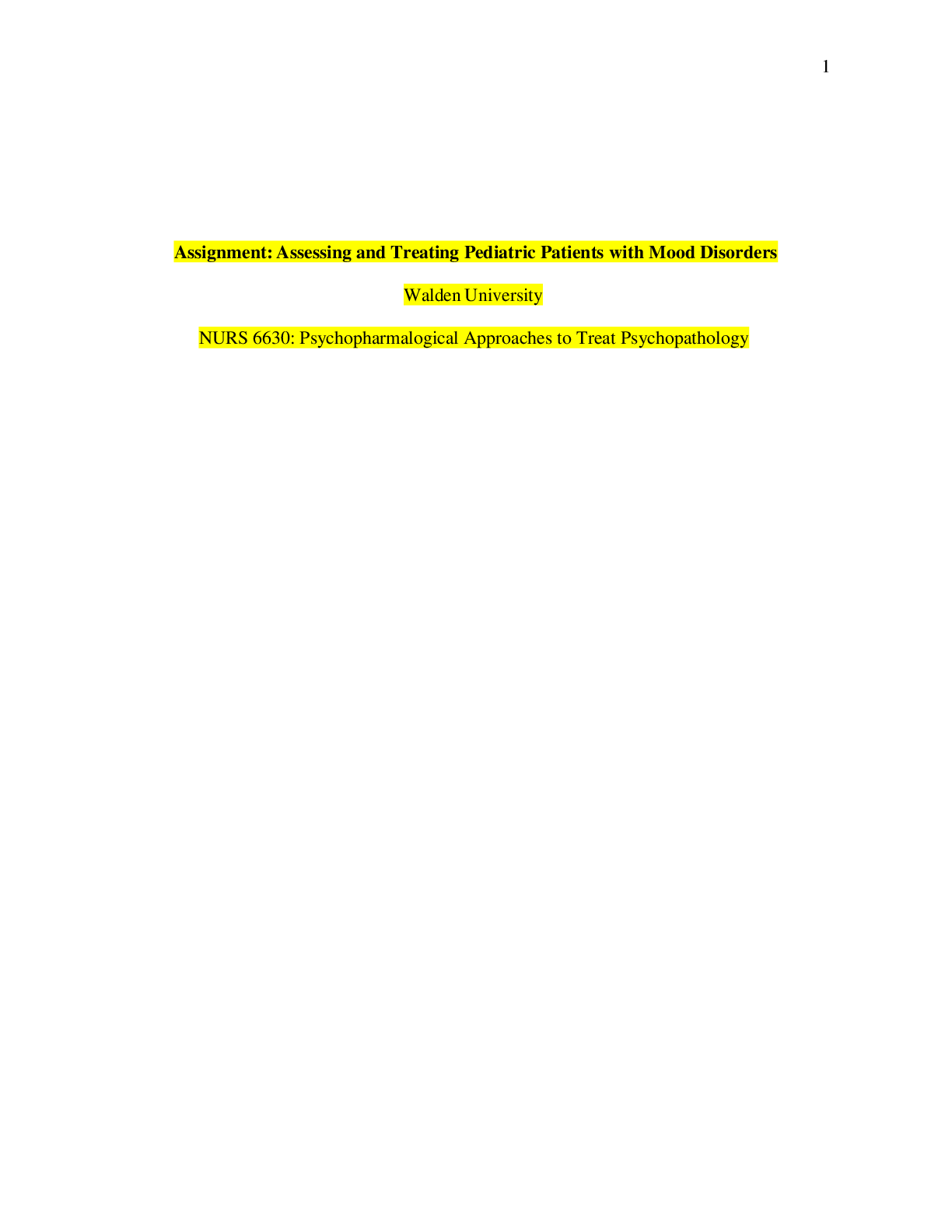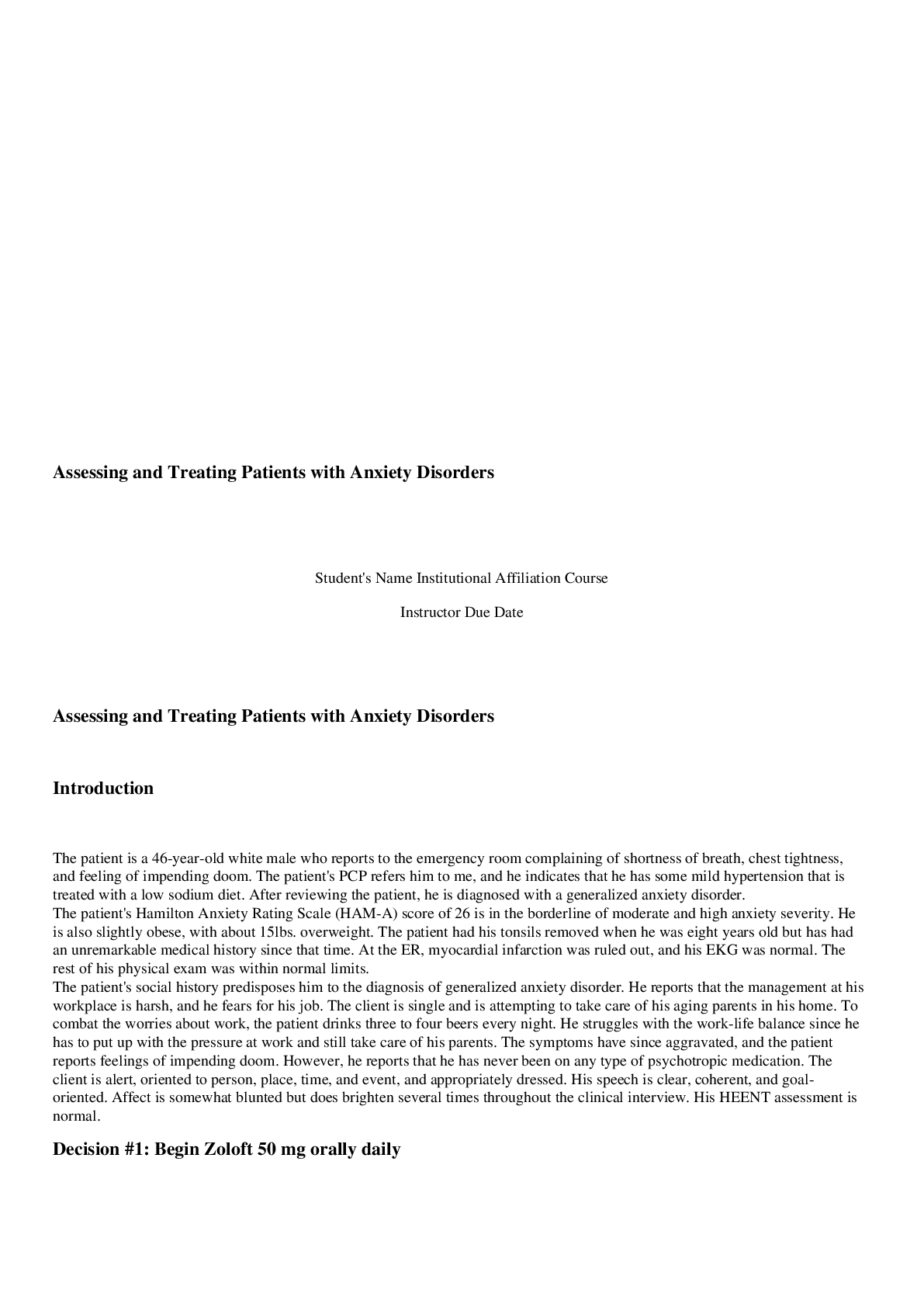*NURSING > CASE STUDY > (Answered) NURS 6630 week 5 Assignment: Assessing and Treating Patients With Bipolar Disorder (All)
(Answered) NURS 6630 week 5 Assignment: Assessing and Treating Patients With Bipolar Disorder
Document Content and Description Below
NURS6630/NURS 6630/nurs6630 week 5 Assignment: Assessing and Treating Patients With Bipolar Disorder BACKGROUND INFORMATION The client is a 26-year-old woman of Korean descent who presents to her firs... t appointment following a 21-day hospitalization for onset of acute mania. She was diagnosed with bipolar I disorder. Upon arrival in your office, she is quite “busy,” playing with things on your desk and shifting from side to side in her chair. She informs you that “they said I was bipolar, I don’t believe that, do you? I just like to talk, and dance, and sing. Did I tell you that I liked to cook?” She weights 110 lbs. and is 5’ 5” SUBJECTIVE Patient reports “fantastic” mood. Reports that she sleeps about 5 hours/night to which she adds “I hate sleep, it’s no fun.” You reviewed her hospital records and find that she has been medically worked up by a physician who reported her to be in overall good health. Lab studies were all within normal limits. You find that the patient had genetic testing in the hospital (specifically GeneSight testing) as none of the medications that they were treating her with seemed to work. Genetic testing reveals that she is positive for CYP2D6*10 allele. Patient confesses that she stopped taking her lithium (which was prescribed in the hospital) since she was discharged two weeks ago. MENTAL STATUS EXAM The patient is alert, oriented to person, place, time, and event. She is dressed quite oddly- wearing what appears to be an evening gown to her appointment. Speech is rapid, pressured, tangential. Self-reported mood is euthymic. Affect broad. Patient denies visual or auditory hallucinations, no overt delusional or paranoid thought processes readily apparent. Judgment is grossly intact, but insight is clearly impaired. She is currently denying suicidal or homicidal ideation. The Young Mania Rating Scale (YMRS) score is 22 RESOURCES Chen, R., Wang, H., Shi, J., Shen, K., & Hu, P. (2015). Cytochrome P450 2D6 genotype affects the pharmacokinetics of controlled-release paroxetine in healthy Chinese subjects: comparison of traditional phenotype and activity score systems. European Journal of Clinical Pharmacology, 71(7), 835-841. doi:10.1007/s00228-015-1855-6 Decision Point One Begin Risperdal 1 mg orally BID RESULTS OF DECISION POINT ONE Client returns to clinic in four weeks Client is accompanied today by her mother who must help the client into your office, the client looks very sedated and lethargic Client’s mother explains that “she has been like this since about a week after the last office visit” Decision Point Two Decrease Risperdal to 1 mg at HS RESULTS OF DECISION POINT TWO Client returns to clinic in four weeks Client is less sedate, less lethargic and shows symptom improvement Young Mania Rating Scale has decreased from 22 to 16 (a bit more than a 25% decrease in symptoms) Decision Point Three Continue at same dose of Risperdal and reassess in 4 weeks Guidance to Student At this point, you may be wise to allow the client to remain at the same dose and reassess in 4 weeks. Recall that the client is of Korean descent and is positive for CYP2D6*10 allele. As a result, she may have slower clearance of Risperdal from her system, which may have resulted in higher than normal levels of Risperdal in the blood, which in turn resulted in sedation. Therefore, if we were to increase back to 1 mg orally BID, she may have the same side effects. Latuda is FDA approved for bipolar I depression, which is not the presentation we are attempting to treat. Additionally, it is quite expensive and many insurance companies will not pay for it until other agents have been attempted and failed. Bipolar disorder is a unique disorder that causes shifts in mood and energy, which results in depression and mania for patients. Proper diagnosis of this disorder is often a challenge for two reasons: 1) patients often present as depressive or manic but may have both; and 2) many symptoms of bipolar disorder are similar to other disorders. Misdiagnosis is common, making it essential for you to have a deep understanding of the disorder’s pathophysiology. For this Assignment, as you examine the patient case study in this week’s Learning Resources, consider how you might assess and treat patients presenting with bipolar disorder. To prepare for this Assignment: Review this week’s Learning Resources, including the Medication Resources indicated for this week. Reflect on the psychopharmacologic treatments you might recommend for the assessment and treatment of patients requiring bipolar therapy. The Assignment: 5 pages Examine Case Study: An Asian American Woman. Diagnosis-Bipolar Disorder. You will be asked to make three decisions concerning the medication to prescribe to this patient. Be sure to consider factors that might impact the patient’s pharmacokinetic and pharmacodynamic processes. At each decision point, you should evaluate all options before selecting your decision and moving throughout the exercise. Before you make your decision, make sure that you have researched each option and that you evaluate the decision that you will select. Be sure to research each option using the primary literature. Introduction to the case (1 page) Briefly explain and summarize the case for this Assignment. Be sure to include the specific patient factors that may impact your decision making when prescribing medication for this patient. Decision #1 (1 page) Which decision did you select? Why did you select this decision? Be specific and support your response with clinically relevant and patient-specific resources, including the primary literature. Why did you not select the other two options provided in the exercise? Be specific and support your response with clinically relevant and patient-specific resources, including the primary literature. What were you hoping to achieve by making this decision? Support your response with evidence and references to the Learning Resources (including the primary literature). Explain how ethical considerations may impact your treatment plan and communication with patients. Be specific and provide examples. Decision #2 (1 page) Why did you select this decision? Be specific and support your response with clinically relevant and patient-specific resources, including the primary literature. Why did you not select the other two options provided in the exercise? Be specific and support your response with clinically relevant and patient-specific resources, including the primary literature. What were you hoping to achieve by making this decision? Support your response with evidence and references to the Learning Resources (including the primary literature). Explain how ethical considerations may impact your treatment plan and communication with patients. Be specific and provide examples. Decision #3 (1 page) Why did you select this decision? Be specific and support your response with clinically relevant and patient-specific resources, including the primary literature. Why did you not select the other two options provided in the exercise? Be specific and support your response with clinically relevant and patient-specific resources, including the primary literature. What were you hoping to achieve by making this decision? Support your response with evidence and references to the Learning Resources (including the primary literature). Explain how ethical considerations may impact your treatment plan and communication with patients. Be specific and provide examples. Conclusion (1 page) Summarize your recommendations on the treatment options you selected for this patient. Be sure to justify your recommendations and support your response with clinically relevant and patient-specific resources, including the primary literature. [Show More]
Last updated: 1 year ago
Preview 1 out of 11 pages
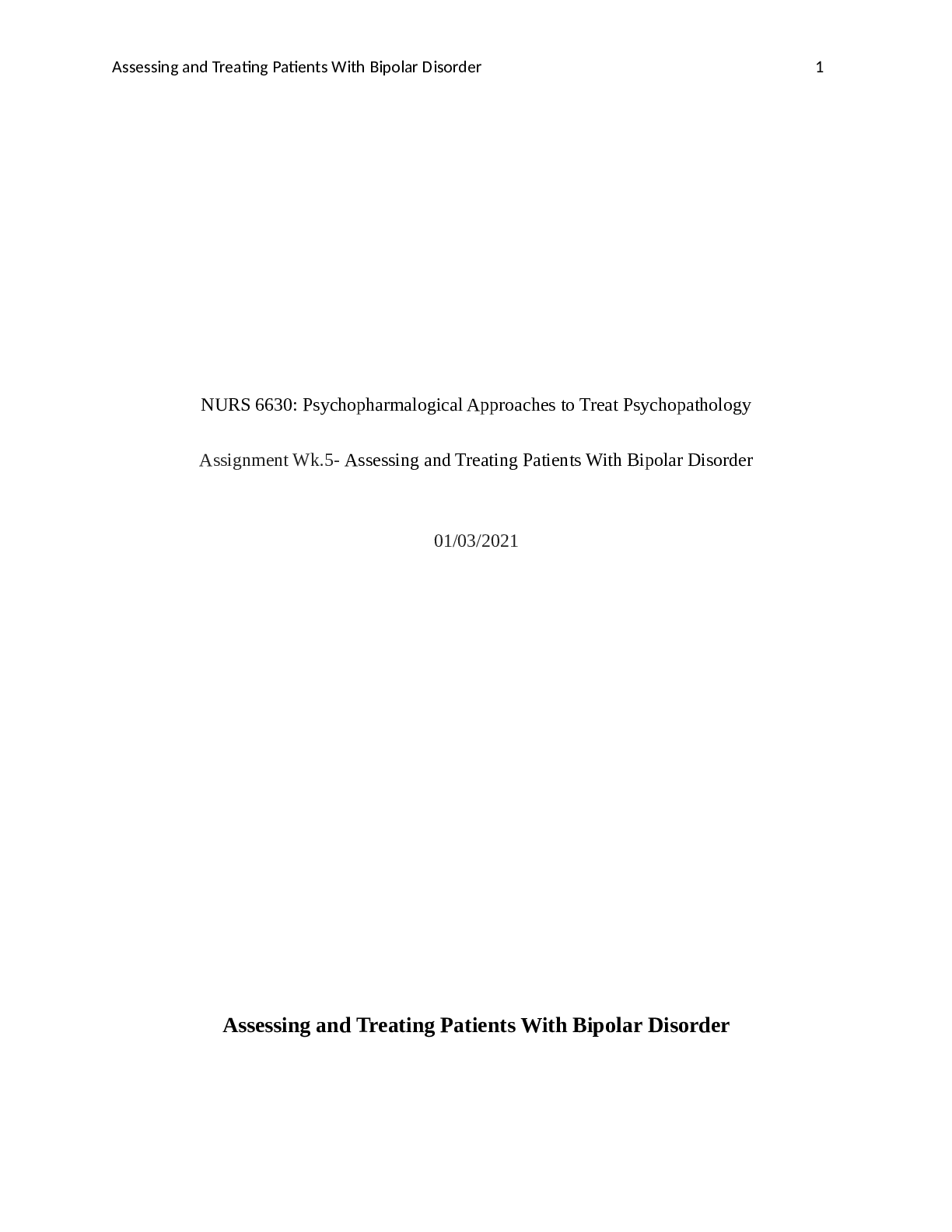
Reviews( 0 )
Document information
Connected school, study & course
About the document
Uploaded On
Jul 27, 2022
Number of pages
11
Written in
Additional information
This document has been written for:
Uploaded
Jul 27, 2022
Downloads
0
Views
70
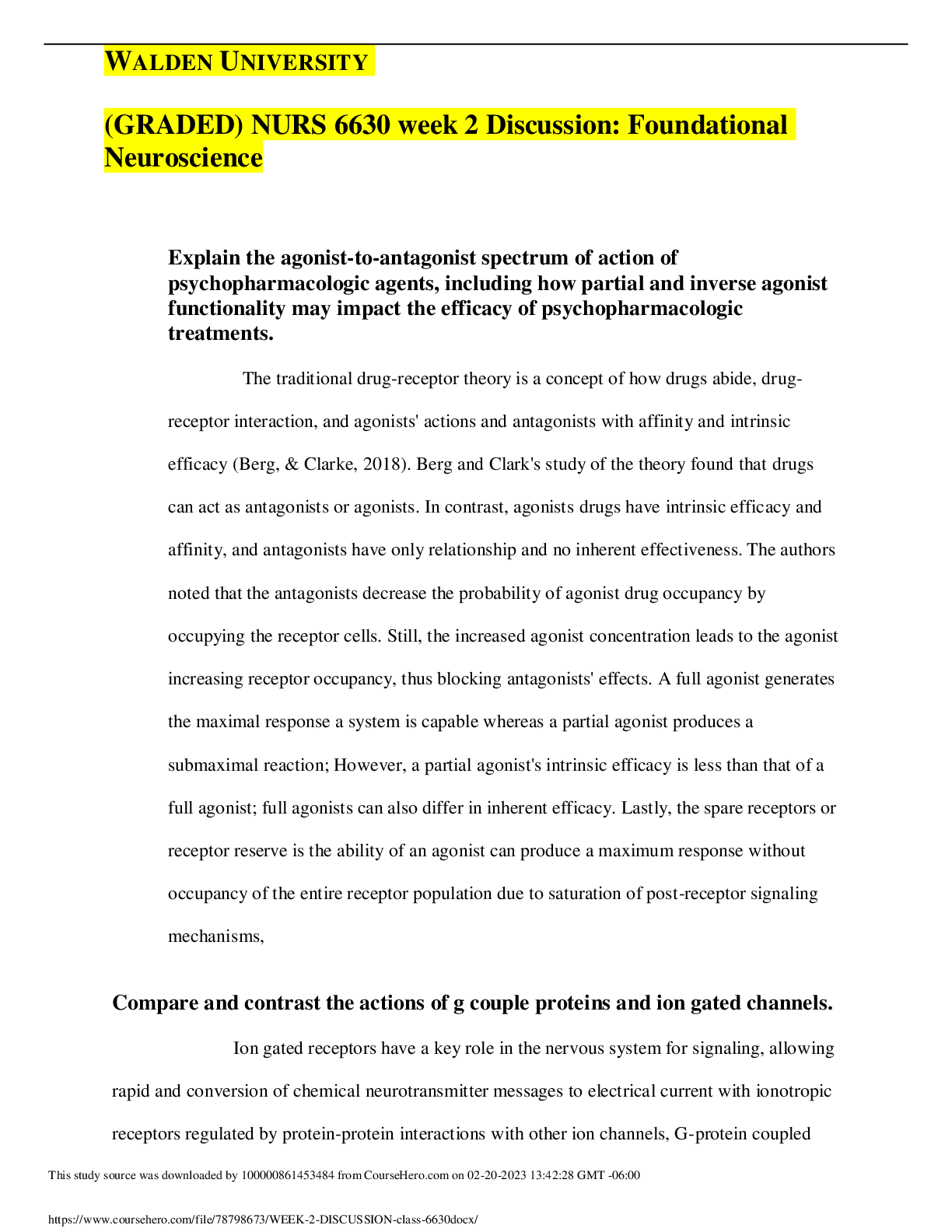



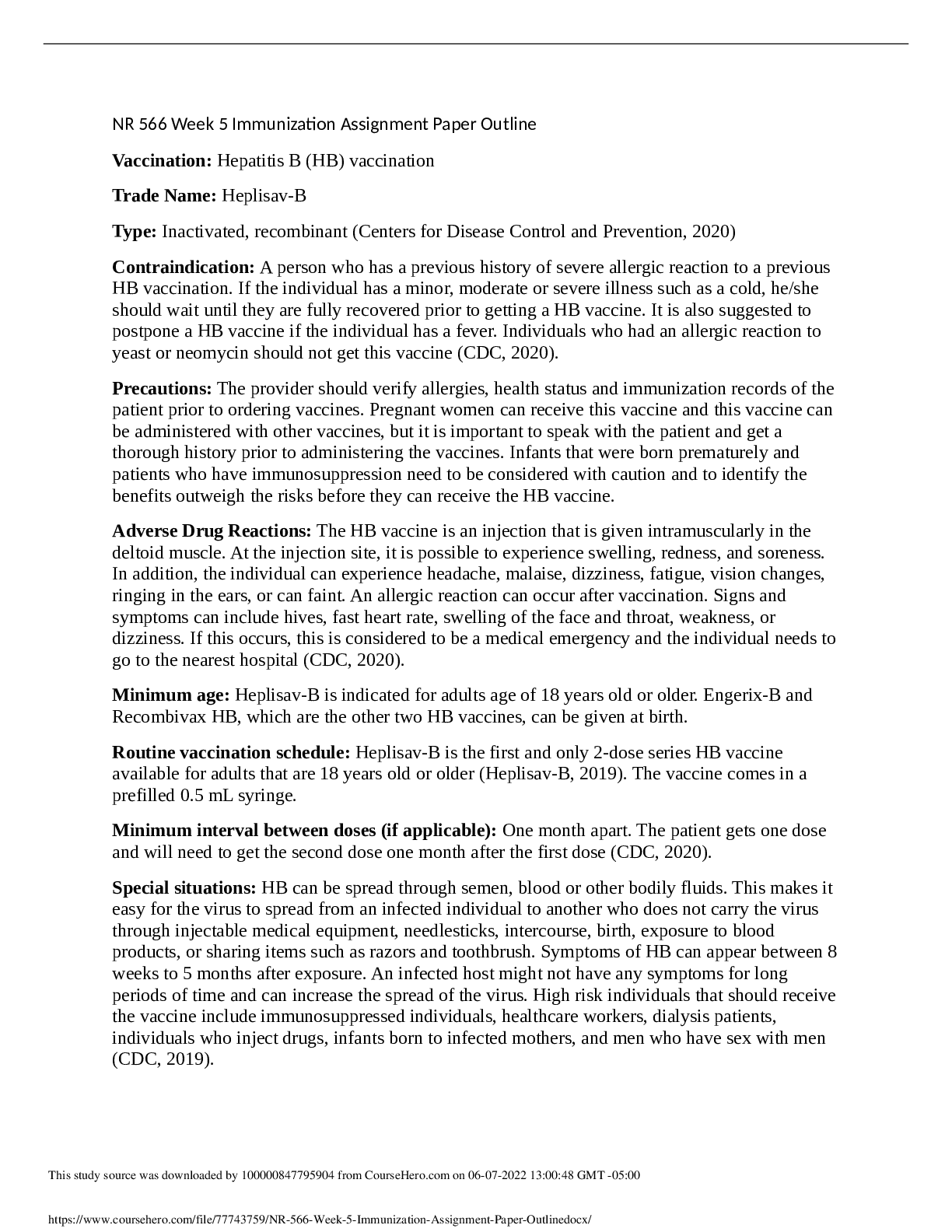

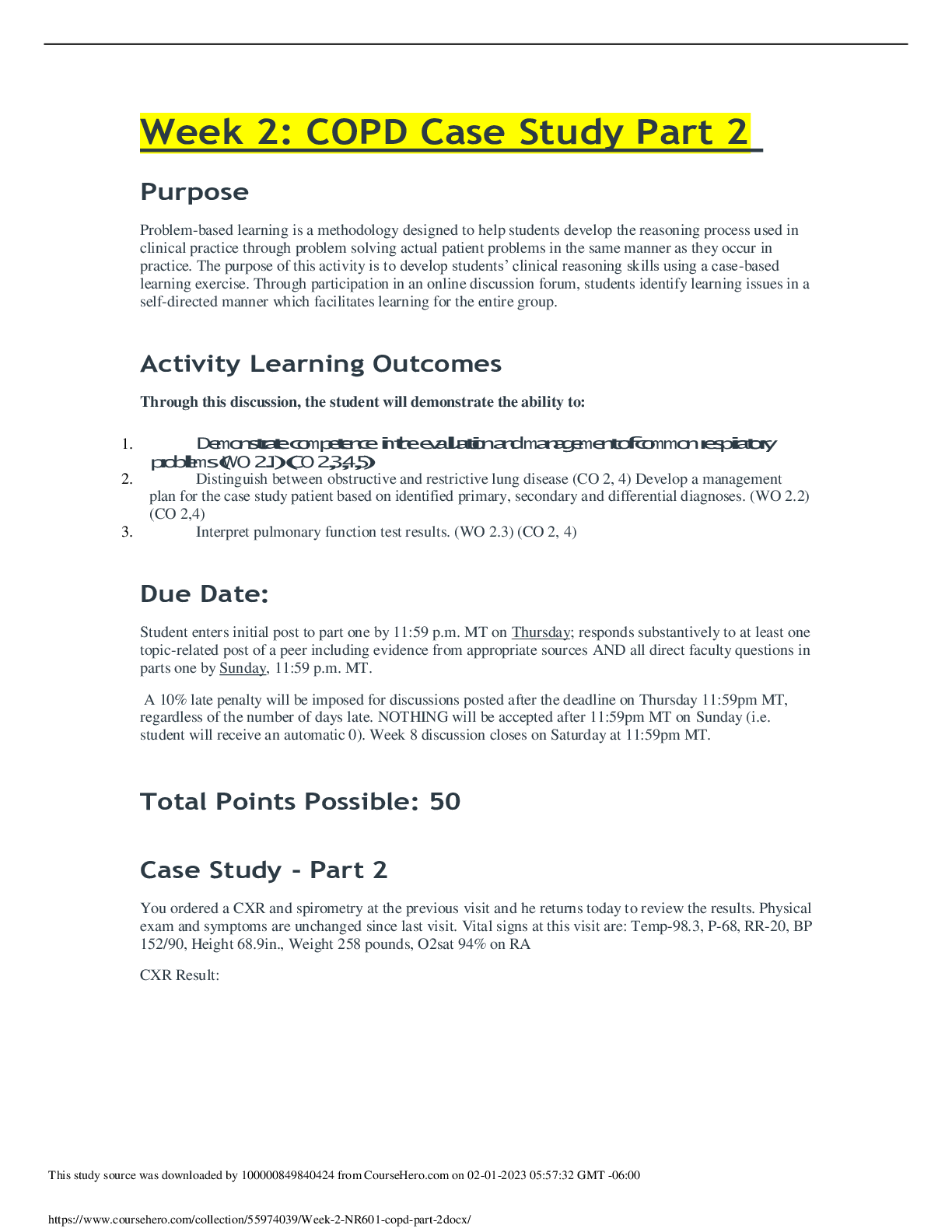
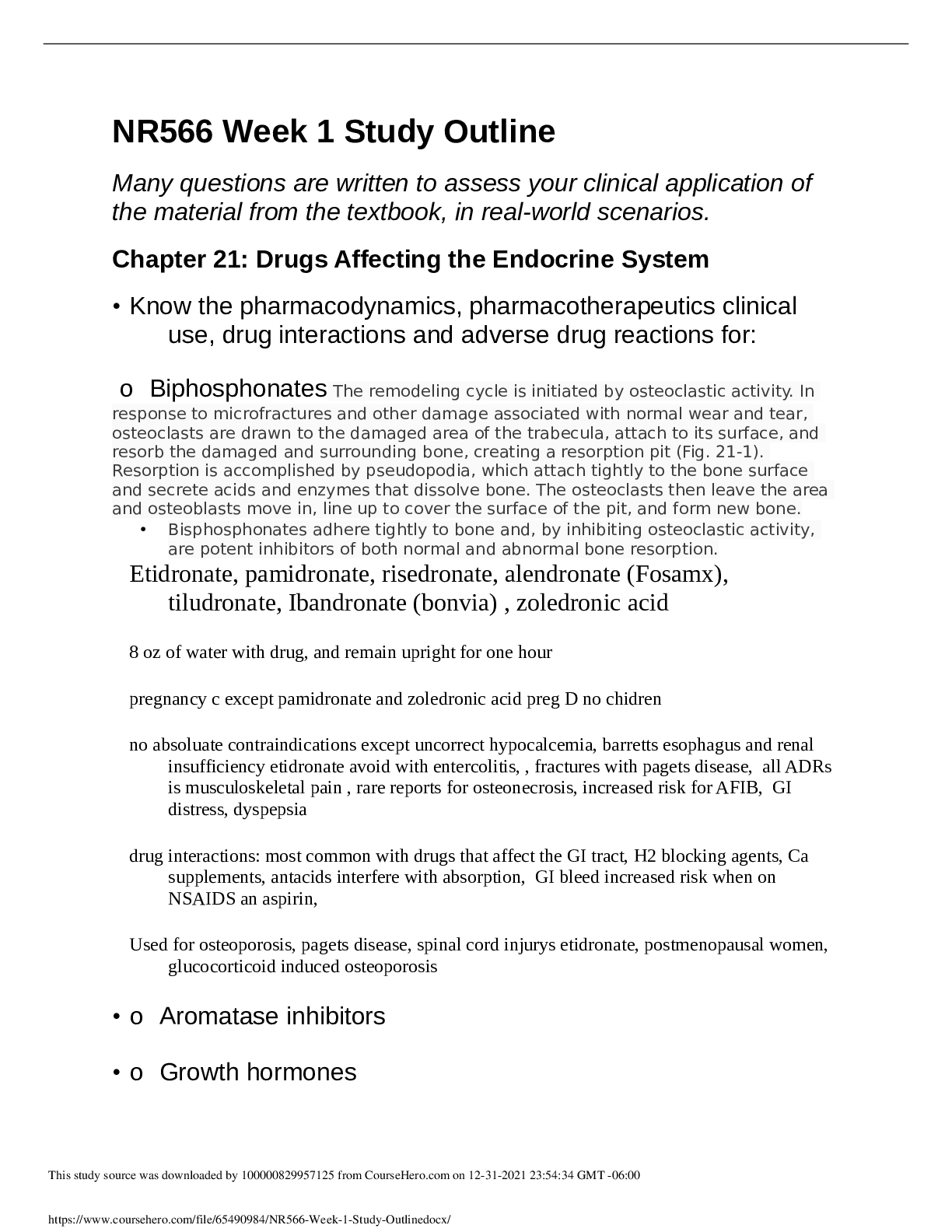

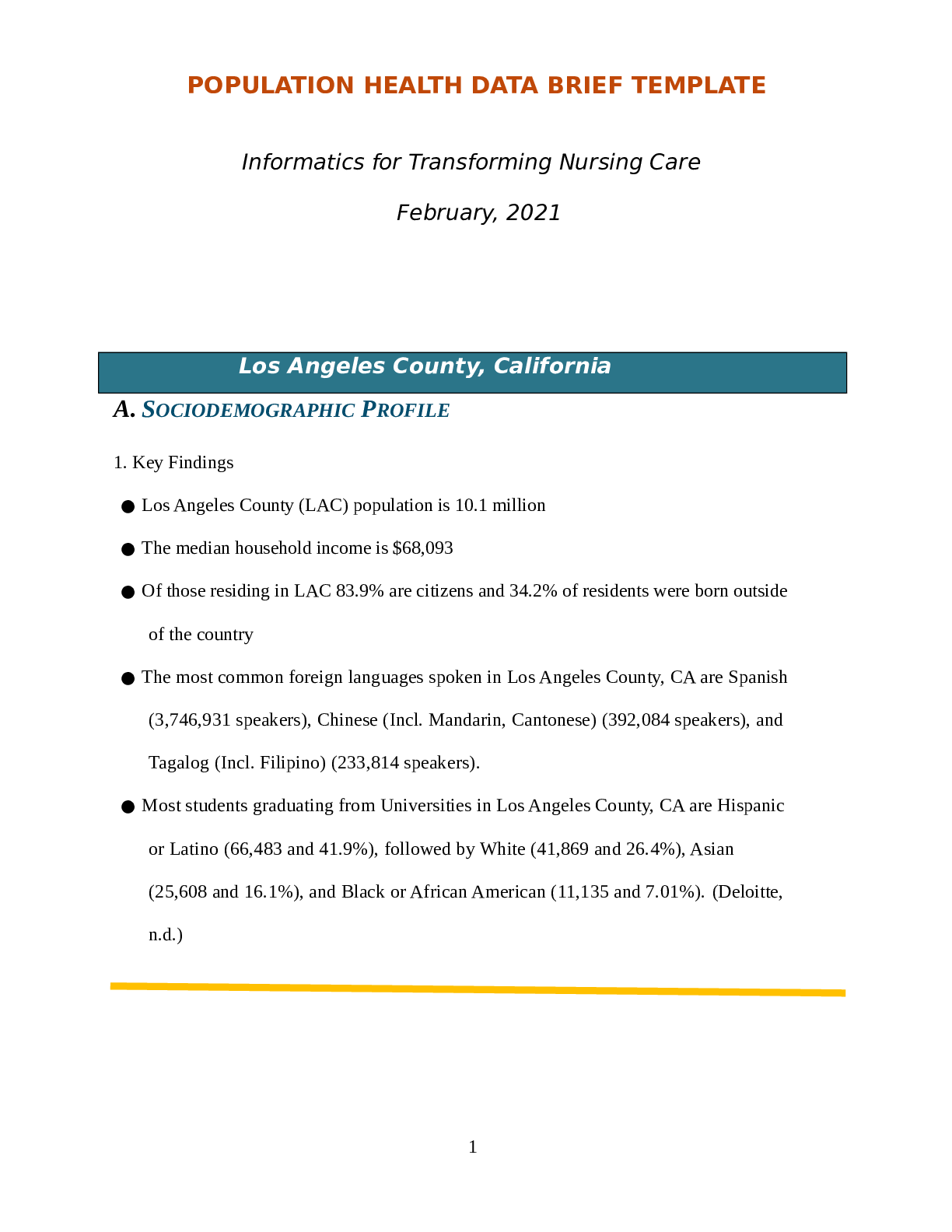

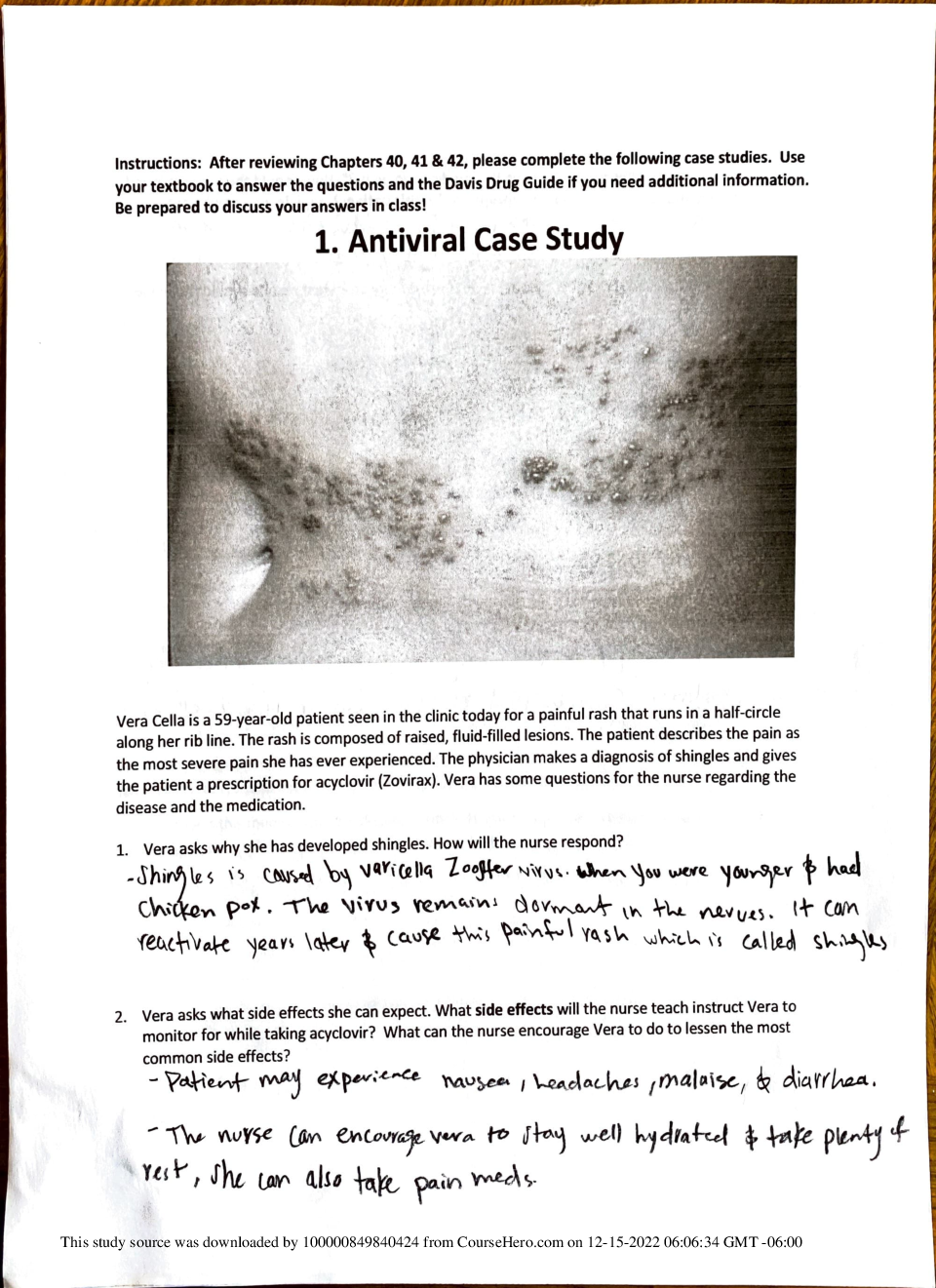


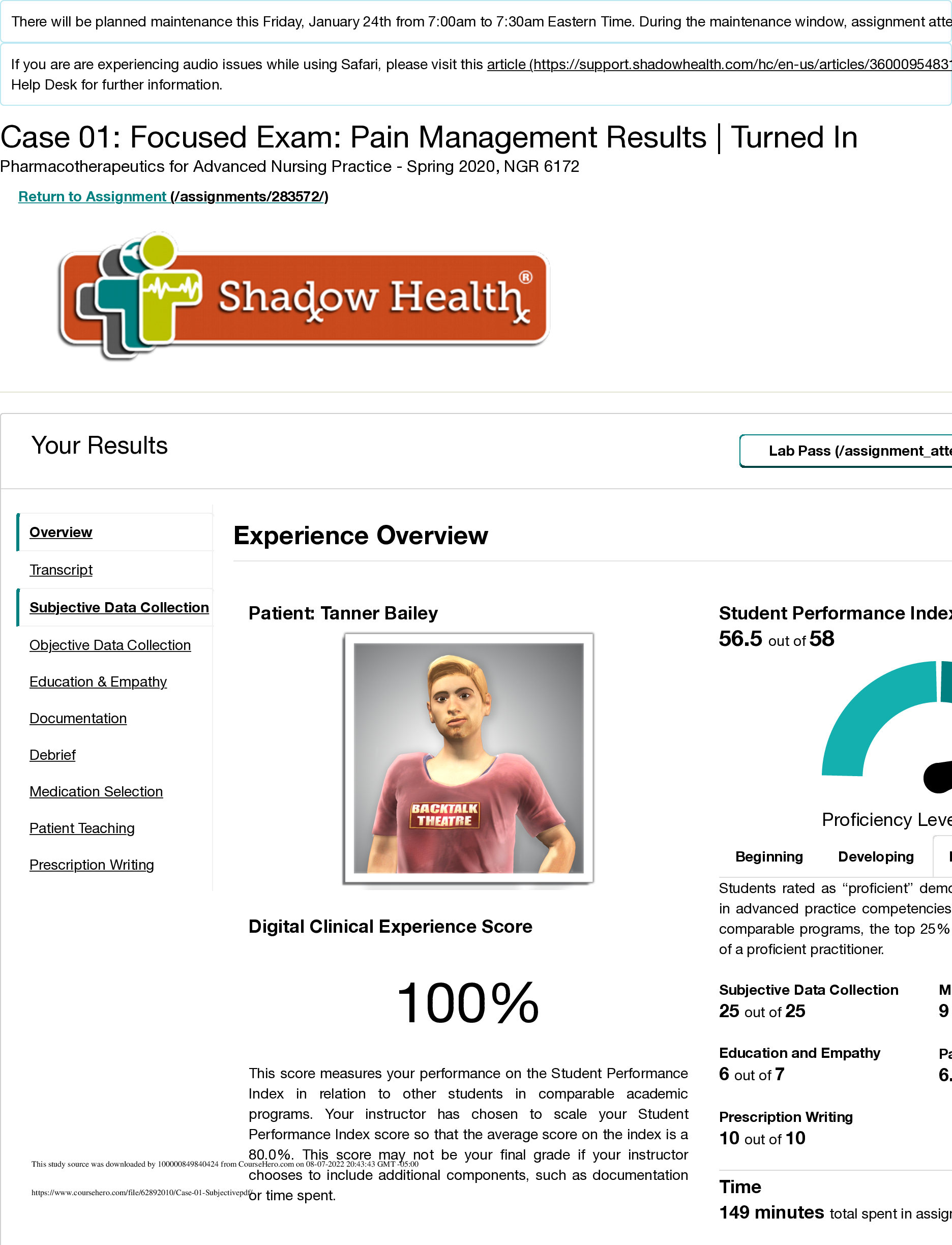
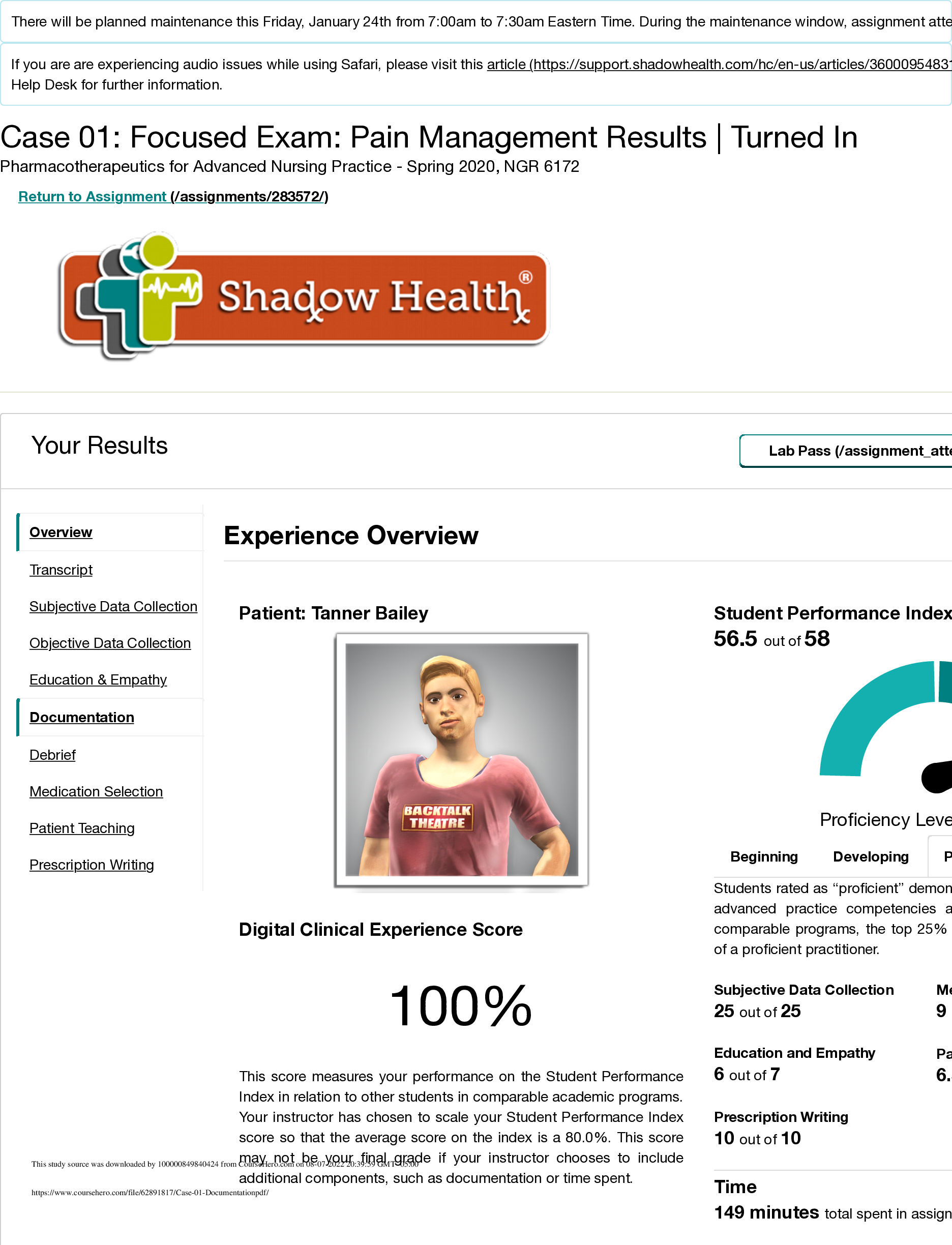

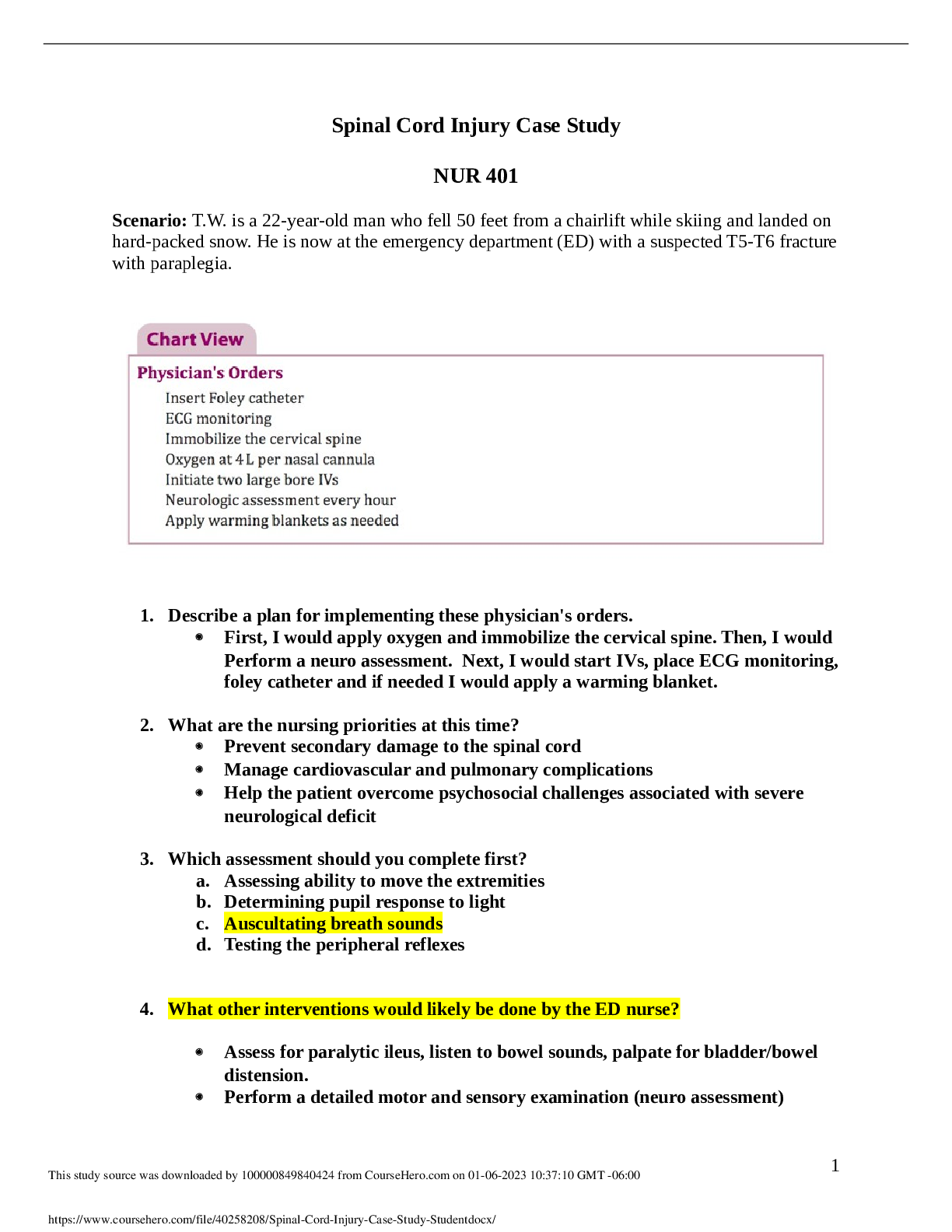
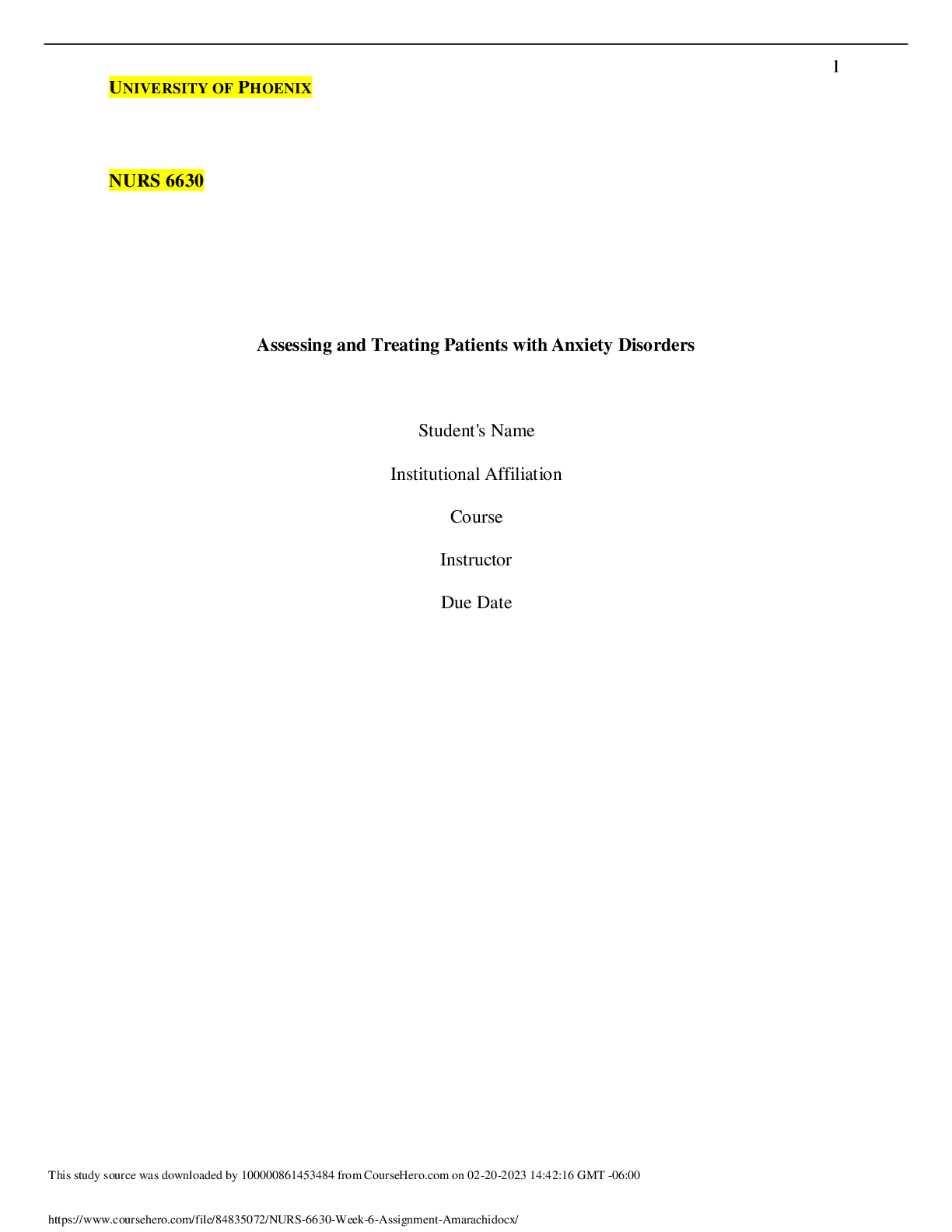
 (1).png)



.png)

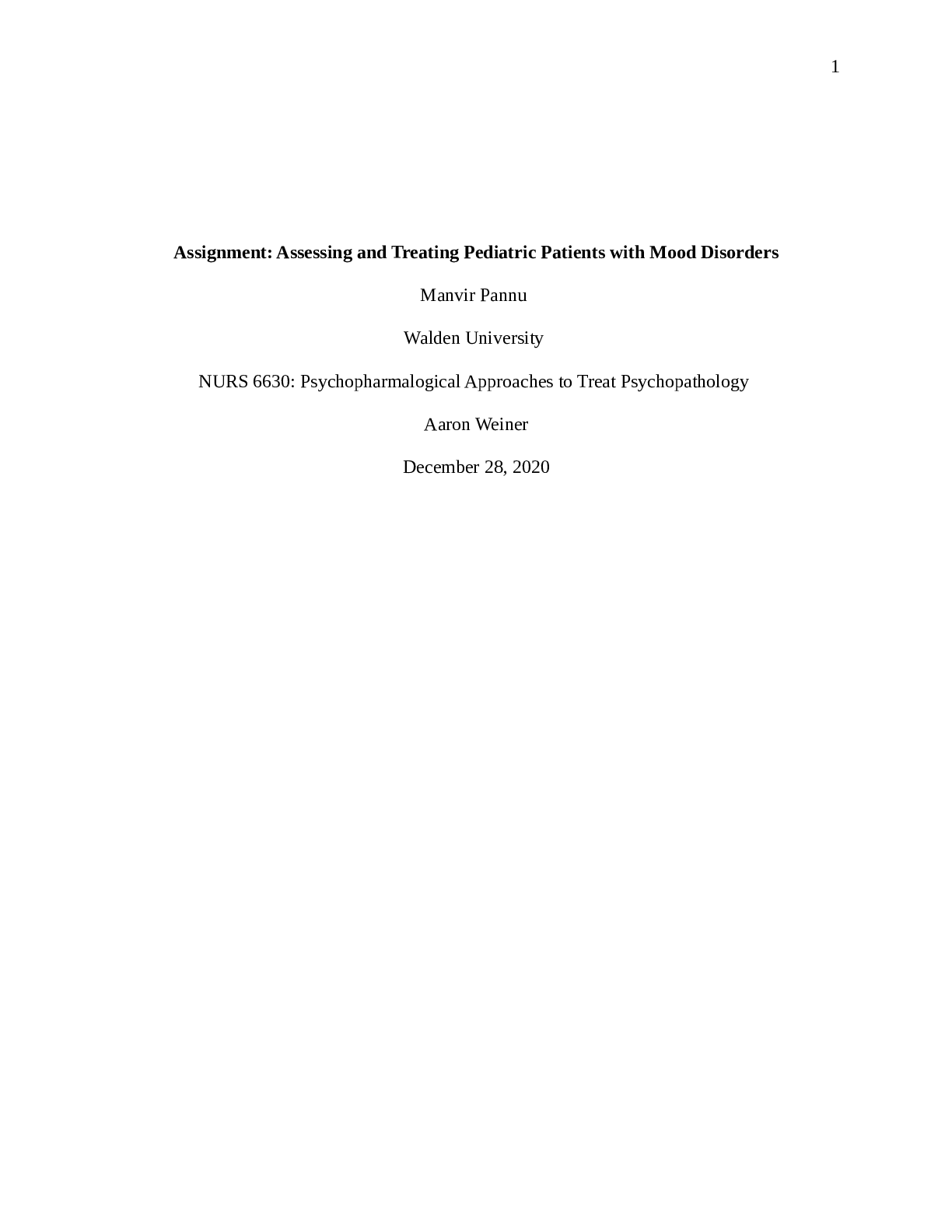
 NURS 6630 Week 4 Assignment.png)
